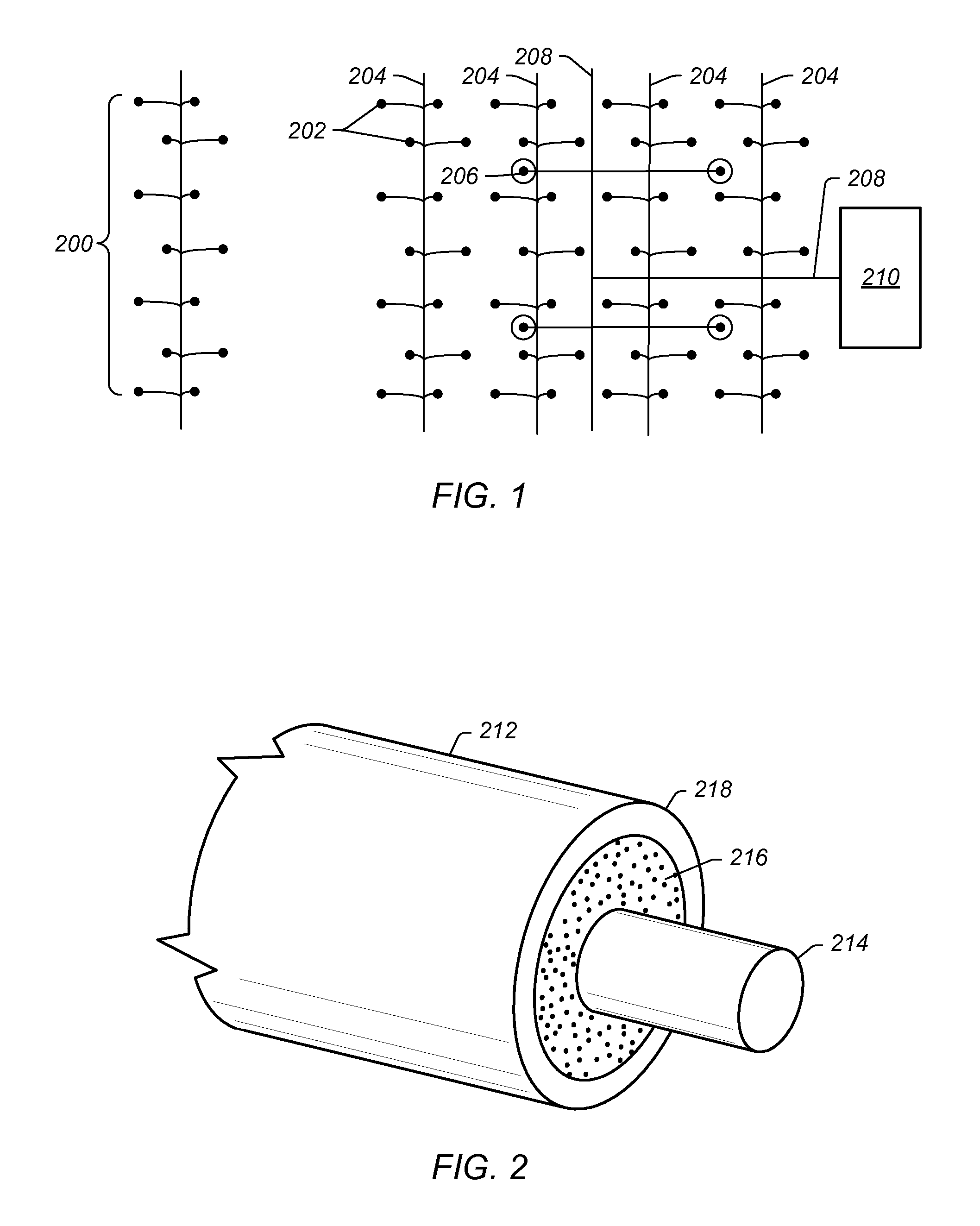Compaction of electrical insulation for joining insulated conductors
a technology of electrical insulation and splicing, which is applied in the direction of couplings/cases, line/current collector details, coupling device connections, etc., can solve problems such as electrical insulation to overcome, electrical insulators to be spliced together, and core bulges or other mechanical defects to occur, so as to reduce the electric field intensities of splices and reduce leakage currents , the effect of bending and tensile strength
- Summary
- Abstract
- Description
- Claims
- Application Information
AI Technical Summary
Benefits of technology
Problems solved by technology
Method used
Image
Examples
examples
[0268]Non-restrictive examples are set forth below.
Samples Using Fitting Embodiment Depicted in FIG. 5
[0269]Samples using an embodiment of fitting 250 similar to the embodiment depicted in FIG. 5 were fabricated using a hydraulic compaction machine with a medium voltage insulated conductor suitable for use as a subsurface heater on one side of the fitting and a medium voltage insulated conductor suitable for use as an overburden cable on the other side of the fitting. Magnesium oxide was used as the electrically insulating material in the fittings. The samples were 6 feet long from the end of one mineral insulated conductor to the other. Prior to electrical testing, the samples were placed in a 6½ ft long oven and dried at 850° F. for 30 hours. Upon cooling to 150° F., the ends of the mineral insulated conductors were sealed using epoxy. The samples were then placed in an oven 3 feet long to heat up the samples and voltage was applied to the samples using a 5 kV (max) hipot (...
PUM
| Property | Measurement | Unit |
|---|---|---|
| Force | aaaaa | aaaaa |
| Pressure | aaaaa | aaaaa |
| Shape | aaaaa | aaaaa |
Abstract
Description
Claims
Application Information
 Login to View More
Login to View More - R&D
- Intellectual Property
- Life Sciences
- Materials
- Tech Scout
- Unparalleled Data Quality
- Higher Quality Content
- 60% Fewer Hallucinations
Browse by: Latest US Patents, China's latest patents, Technical Efficacy Thesaurus, Application Domain, Technology Topic, Popular Technical Reports.
© 2025 PatSnap. All rights reserved.Legal|Privacy policy|Modern Slavery Act Transparency Statement|Sitemap|About US| Contact US: help@patsnap.com



